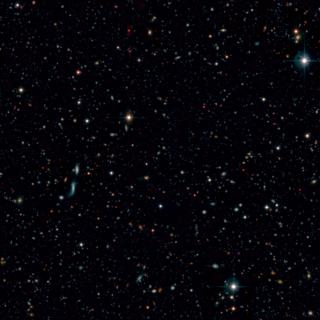Bibcode
Shore, S. N.; Augusteijn, T.; Ederoclite, A.; Uthas, H.
Bibliographical reference
Astronomy and Astrophysics, Volume 533, id.L8
Advertised on:
9
2011
Journal
Citations
63
Refereed citations
54
Description
Aims: We aim to derive the physical properties of the recurrent
nova T Pyx and the structure of the ejecta during the early stages of
expansion of the 2011 outburst. Methods: The nova was observed
with high resolution spectroscopy (R ≈ 65 000), from one day after
discovery of the outburst and until the last visibility of the star at
the end of May 2011. The interstellar absorption lines of Na I, Ca II,
CH, CH+, and archival H I 21 cm emission line observations
were used to determine a kinematical distance. Interstellar diffuse
absorption features have been used to determine the extinction
independent of previous assumptions. Sample Fe-peak line profiles show
the optical depth and radial velocity evolution of the discrete
components. Results: We propose a distance to T Pyx ≥ 4.5 kpc,
with a strict lower limit of 3.5 kpc (the previously accepted distance).
We derive an extinction, E(B - V) ≈ 0.5 ± 0.1, that is higher
than previous estimates. The first observation, Apr. 15, displayed He I,
He II, C III, and N III emission lines and a maximum velocity derived
from the P Cyg profiles of the Balmer and He I lines of ≈2500 km
s-1 that is characteristic of the fireball stage. These ions
were undetectable in the second spectrum, Apr. 23, and we use the
recombination time to estimate the mass of the ejecta, 10-5f
M&sun; for a filling factor f. Numerous absorption-line
systems were detected in the Balmer, Fe-peak, Ca II, and Na I lines,
mirrored in broader emission-line components, that showed an
"accelerated" displacement in velocity. We also show that the time
sequence of these absorptions, which are common to all lines and arise
only in the ejecta, can be described by a recombination front moving
outward in the expanding gas without either a stellar wind or
circumstellar collisions. By the end of May, the ejecta were showing
signs of turning optically thin in the ultraviolet.
Appendices are available in electronic form at http://www.aanda.org
Related projects

Evolution of Galaxies
Galaxy evolution is a crucial topic in modern extragalactic astrophysics, linking cosmology to the Local Universe. Their study requires collecting statistically significant samples of galaxies of different luminosities at different distances. It implies the ability to observe faint objects using different techniques, and at different wavelengths
Jorge
Cepa Nogue